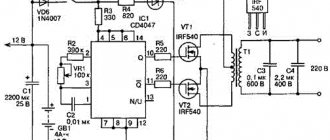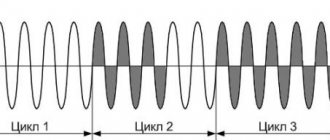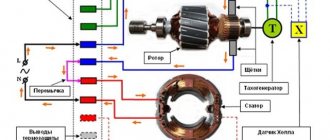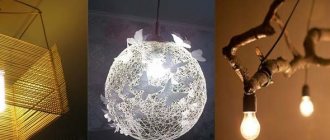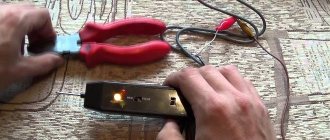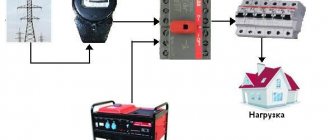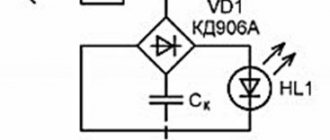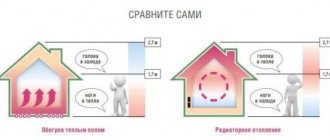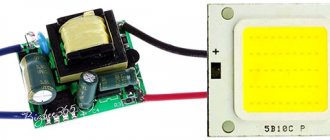| Place | Name | Characteristics in the rating |
| TOP 5 best wind generators from AliExpress |
| 1 | Smaraad | The best ratio of price and quality |
| 2 | Becornce | The most popular wind generator on AliExpress |
| 3 | VESDAS | Best price |
| 4 | JSRX ZXX | Stainless steel blades |
| 5 | FLTXNY | The most reliable device |
A wind generator is a great opportunity to use natural energy, for which you don’t have to pay. By installing such a unit in a private home, you will provide it with a supply of electricity sufficient to ensure the operation of basic systems.
It is worth noting that our rating does not consider huge generators that produce several hundred kilowatts, but small devices that are easy to install with your own hands. Their power rarely exceeds 800 W, and this is quite enough to operate devices from 12 or 24 volts. The AliExpress platform offers many interesting models that differ in a number of factors:
- size;
- installation method;
- output power;
- regulation of incoming and outgoing energy;
- availability of additional functions.
Our top list included devices with excess power up to a kilowatt, delivering 12 or 24 volts, since they do not require registration, are not taxed, and also have an optimal level of noise pollution. Such a wind generator does not need to be installed at a great distance from the home, and even a person who is only superficially familiar with electronics can handle its connection.
Rotary wind generator
The design of a rotor-type wind generator is the simplest, so it is the best option for self-production.
However, it is not suitable for powering a large house with a lot of electrical appliances. But, this is a good solution for the house and the area.
Other possible options
To make a mini wind generator, you can use any electric motors from household appliances. You can adapt the motor from a tape drive mechanism, from an old microwave oven (fan), and different options for brush designs. All of them have low power and will not be able to provide any serious devices, but as trial models created together with children and giving experience and understanding of the process, all of these options are quite suitable.
Based on the knowledge and skills gained, a more productive wind generator can be created that can meet the needs of a private home and transfer it to an autonomous power supply mode.
Parts and Consumables
To manufacture a low-power (no higher than 1.5 kW) rotary wind generator, the following components will be required:
- 12-volt car alternator;
- 12-volt battery;
- converter from 12 V to 220 V, designed for power from 700 W to 1500 W;
- metal cylindrical container. You can use a regular bucket or a fairly large saucepan;
- relay for charging car batteries and a light bulb for charge control;
- 12V push-button switch;
- voltmeter;
- parts for threaded connections;
- wires with a cross section of 2.5 and 4 square;
- clamps for attaching the wind generator to the mast.
You will also need the following tools:
- shears for processing sheet metal (can be replaced with an angle grinder);
- roulette;
- marker;
- screwdriver;
- different wrenches;
- drill with drills;
- pliers and side cutters.
About homemade windmills for home
Particular interest in wind energy is manifested at the household level. This is understandable if you glance at the next bill for consumed energy. Therefore, all kinds of craftsmen are becoming more active, using all the possibilities of obtaining electricity inexpensively.
One of these possibilities, quite real, is closely related to a windmill from a car generator. A ready-made device - a car generator - just needs to be equipped with correctly made blades in order to be able to remove some value of electrical energy from the generator terminals.
True, it will work effectively only if there is windy weather.
An example from the practice of domestic use of wind generators. A well-developed and quite effective practical windmill design. A three-bladed propeller is installed, which is rare for household devices
The use of virtually any automobile generator is acceptable for constructing a windmill. But they usually try to choose a powerful model for the job, capable of delivering high currents. Here, the design of generators from trucks, large passenger buses, tractors, etc. is at the peak of popularity.
In addition to the generator, to manufacture a windmill you will need a number of components:
- two- or three-blade propeller;
- car battery;
- electrical cable;
- mast, support elements, fasteners.
The design of the propeller with two or three blades is considered the most optimal for a classic wind generator. But a household project is often far from an engineering classic. Therefore, most often they try to select ready-made screws for a home structure.
An impeller from a car fan that will be used as a propeller for a home wind turbine. Lightness and large useful area for air force allow the use of such options
This, for example, could be an impeller from an external unit of a split air conditioning system or from a fan of the same car. But when you want to follow the traditions of constructing wind generators, you will have to build the windmill propeller from start to finish with your own hands.
Before deciding to assemble and install a wind generator, it is worth assessing the climatic data of the site and calculating the payback. The information in this very interesting article, which we recommend you read, will provide significant assistance in this regard.
Rotary generator assembly
Let's look at step-by-step instructions on how to make a wind generator of the simplest design:
Take a metal container in the shape of a cylinder (you can use a bucket or pan). Using a marker, divide the workpiece into 4 equal sections. Cut out the blades according to the markings made.Mark and drill holes for the bolts on the bottom and pulley. The holes should be located symmetrically. Bend the blades slightly based on the direction of rotation.
As a rule, rotation occurs in a clockwise direction. The greater the bend angle, the faster the rotor will spin as the blades will capture more air.
Fix the workpiece with the blades on the pulley with threaded connections. Secure the generator to the mast using clamps or other fasteners.
Connect the wiring and assemble the electrical circuit according to the diagram. The wiring should also be securely fastened to the mast to avoid damage.
- Electricity supply
- Production of explosion-proof equipment
- What you need to know when choosing a wind generator
To connect the battery, use 4 square wires. The wires should not be longer than 1 m. To connect electrical appliances, use wires with a cross-section of 2.5 square.
Be sure to connect the inverter. The photo of a homemade wind generator clearly demonstrates the main stages of assembling the unit, as well as wiring diagrams for electrical components.We use an old computer cooler
To make a windmill you need a large cooler; it produces the best results and is easy to use. First of all, you need to disassemble it. The sticker is removed, the plug and the retaining ring are removed. After this, the cooler can be easily disassembled along the axis of rotation into two halves approximately equal in size.
One of them is the rotor, the blades of which will have to be changed to larger ones. To do this, the old blades are carefully broken off or cut off, and new ones are made from a plastic bottle, about 4 times longer than the previous ones. It is most convenient to make three pieces; they will have sufficient base area for strong gluing.
The stator has four windings. They can be left intact, or the number of turns can be changed. A thinner wire is taken and wound onto all the coils in turn, and in different directions. The coils are connected accordingly.
After this, you need to make a rectifier, which will require four diodes. They are connected in pairs in series, then in parallel. The wires are connected, the device is ready. To install it in the wind, you will need a stand or a small mast, which is most easily made from a piece of metal tube. In order for the windmill to point itself into the wind, you will need a tail stabilizer, like an airplane tail.
A tester or LED flashlight is attached to check the functionality.
Axial generator with magnets
The design and principle of operation of an axial type wind generator are based on magnetic induction technology. Such a generator will be noticeably more powerful than its rotary counterpart, which will allow it to power a larger number of consumers.
To ensure high efficiency, it is better to use neodymium magnets, which are available in a wide range on the market.
Expert recommendations
Only those individuals who thoroughly understand electrical engineering should undertake independent work, and also adhere to specially designed diagrams.
- The choice of power source is no less important than the purchase of materials for the frame; alternating current generators and asynchronous motors have proven themselves to be excellent.
- When organizing a place for installation, several nuances should be taken into account; the support must fully correspond to the load, especially if the device is located on the roof of a building.
- After performing the manipulations, different masters obtained units weighing from 200 to 800 kg, quite weighty samples.
- On the ground, it is better to fill the platform with concrete so that when there are gusts of wind, the structure will not be torn out; it is attached to a dense and stable base.
Neodymium magnets have high performance indicators; such elements are often used in wind generators; maximum care must be taken when working with them. When thinking about the shape of the finished product, it is better to choose a round or rectangular type of moving part.
Necessary materials
As the basis of the unit, you can use a car hub with brake discs.
- Generator from an asynchronous motor: diagram, table, instructions on how to make it yourself + photo from the master!
Do-it-yourself solar battery - step-by-step instructions on how to make and install a solar battery at home (photo and video instructions)
- How to choose a solar power plant: ready-made solutions, operating principle, how to choose and install it yourself (photo + video instructions)
If you are using a used hub, service it. It is necessary to disassemble, remove traces of corrosion and contamination, and apply lubricant to the bearings.
Attaching magnets
The magnets should be fixed on the rotor disks. For a standard hub, 20 magnets of standard size 25x8 mm will be sufficient. Magnets must be positioned with alternating poles.
It is better to make a paper template, which you attach to the disk, and place magnets on it.Ideally, rectangular magnets should be used. Before applying, mark each magnet by pole to avoid confusion when alternating.
The attracting sides are “+”, the repulsive sides are “-”. Magnets must be secured with reliable glue. For additional fixation, they should be filled with epoxy resin on top.
Preparing the coils
Ideally, you need to make a detailed calculation of the coil parameters. But, for a low-power generator operating at low speeds, an approximate calculation can be made. For this device, there are enough coils in which the total number of turns will be in the range of 1000-1200.
Solar collectors for home heating: advantages, disadvantages, myths, truth and reviews from owners (130 photos + video)- Wind power plants for home - pros, cons and review of the best modern models (105 photos)
- Do-it-yourself biogas plant - step-by-step description of production, 130 photos and video description of the biogas plant
To increase power, the number of poles should be increased. Make the coils using thick wires to minimize resistance and therefore increase the current.
After assembling the generator, it should be checked. To do this, it is not necessary to attach the unit to the windmill. Just connect your measuring instruments to it and try turning it by hand.The internal diameter of the coil is selected in accordance with the dimensions of the magnet or may slightly exceed it. The coil shape can be round, but it is better to make slightly elongated designs.
How to determine wind speed: is there enough pressure for a household windmill?
We will discuss the issue on the basis of scientific facts and mistakes already made by many owners of private houses
The theoretical part of the project: what to look for when choosing a design
The average annual wind value for any area of Russia or another country can be found on the wind map. This data is widely available.
If we consider the entire territory, then we do not have as many places for favorable use of wind energy with a speed of 5 m/sec and higher as in Europe.
I explain this situation by the fact that the warm air of the Gulf Stream, rising from the heated water, immediately rushes into cold areas. The higher the temperature difference, the greater its speed.
After traveling several thousand kilometers over Europe, its strength weakens. The greatest temperature difference in spring and autumn causes storms and hurricanes. It is important for us to understand how to determine the wind speed correctly in our area.
Let's take the value of 5 m/sec as a basis and calculate the power of the wind flow for the most common horizontally located axial generator.
Let us take into account that its blades cover the area of a circle S (m2) with a diameter D (m). The wind passes through it with speed V (m/sec).
Wind energy Рв is calculated by the formula:
Рв=V3∙ρ∙S
ρ is the density of the air mass (kg/m3)
If we take average values, for example, an area of 3 square meters and an air density of 1.25 kg/m3, then a wind blowing at a speed of 5 m/sec can create a power of slightly less than 2 kilowatts.
Now our task is to determine what part of it can be converted into useful electrical energy. Roughly it can be estimated by a percentage of 30÷40%. The design and technological characteristics of the wind wheel simply will not allow you to effectively take more.
A more accurate definition is found by a formula that takes into account:
- coefficient ε, which determines the share of wind energy used by the wind turbine design. The maximum value created by high-speed structures is 40-50%;
- Gearbox efficiency —∙maximum about 90%;
- Generator efficiency ≈85%.
The values of all these coefficients differ greatly among different models of wind turbine generators. I gave values for industrial products. For homemade workers, they will be significantly lower.
If we substitute all these figures, then even for the factory design of a wind generator, made according to precise drawings and on industrial machines, we can obtain less than 700 watts of electrical energy at a speed of 5 m/sec and a rotor blade area of 3 square meters.
One can only guess which part of it a homemade windmill can take.
Global manufacturers of wind generators indicate that in order to generate 3 kW of electricity, and this is the optimal value for a private home, it is necessary:
- remove about 5.1 kW from the wind wheel;
- have a rotor diameter of 4.5 meters;
- place the windmill at a height of 12 meters;
- use wind speed of 10 m/sec.
The wheel should begin to rotate the generator at 2 m/sec. Only in this case can we talk about the payback of the entire structure and the efficient use of wind power.
If the speed decreases to at least 7 m/sec, then the energy of the wind generator will drop by 50%. Now look carefully at the map of Russian winds again...
However, it's not all bad. Theoretical calculations can be tested in practice. For our case, the sale offers numerous designs of measuring instruments - anemometers.
They are not expensive, have additional functions of measuring temperature and indicating the current time. They can be ordered in China.
Such an anemometer allows you to realistically assess the wind strength in your area in order to analyze the operating options for a future wind power plant (WPP). And there are at least 2 of them:
- partial satisfaction of electricity needs;
- complete transition to alternative energy.
Hidden mistake - weak wind: what sellers are keeping silent
First difficulty
Pay attention to the height of the wind wheel relative to the ground. Think about why all industrial wind turbines are located at 25 meters or more.
After all, this significantly complicates their installation, operation, maintenance, and repair. It is necessary to use expensive high-altitude equipment and create durable platforms for its placement.
And the answer is simple: at an altitude of 25 meters, the wind speed is much higher than at the ground. All tables and directories with wind maps are created primarily for industrial installations raised in the 50-70m zone.
If you mount your homemade wind generator at 10 meters, the wind will blow weaker than indicated in the guide. And placing a windmill at a high altitude without special technical means is very problematic.
The operation of a wind wheel is caused not so much by the speed of movement of the air mass, but by its pressure on the wheel blades. And it also depends on the weight and density of the atmosphere.
Alternative energy workers have long taken into account the ratio that determines that doubling wind pressure increases the power generated by a wind generator by eight times.
How does the turbulence zone affect
The operation of a wind turbine located at a low altitude can be significantly complicated by a turbulence zone, which depends not only on the terrain and the shape of the hill, but also on the speed of movement of air masses.
Wind generator lightning protection
A working impeller constantly rubs against the air, accumulating static electricity, just like the fuselage of any aircraft during flight. Aircraft designers successfully solve this issue in various ways.
Industrial wind generators are also equipped with effective lightning protection, discharges of which can occur at any time during a thunderstorm.
Most owners of private houses do not even think about this problem, but in vain. At best, some owners can find an SPD in the incoming electrical panel, which is clearly not enough.
Having raised an iron structure above the roof of their home, which also generates electrical voltage, they have already created an excellent lightning rod. It will reliably attract huge currents of atmospheric discharges.
If you do not provide an effective way to drain them past the building to the potential of the earth, you will have to constantly tempt fate and expose yourself to unexpected danger.
How wind turbine manufacturers lie
The final tests of factory models are carried out in a wind tunnel with ideal laminar flow with a uniform directional structure and high density.
In the real conditions of a private home, such conditions simply do not exist. They are more suitable for the movement of air masses near industrial installations located at high altitudes.
For homemade wind generators mounted even at 10 meters, turbulent conditions and low winds can greatly limit the rotation of the rotor.
The terrain affects the power density. For example, directly below a hill it decreases sharply, and at its top ideal conditions are created due to compression of the aerodynamic characteristics and increased pressure.
Utility buildings, garden trees, fences, and neighboring buildings will also have an impact.
Mast mounting
Ideally, the mast should be as high as possible. Therefore, pay attention to ensuring the strength of the base.
A wind turbine is mounted on top. It is optimal to construct it from PVC pipe with a cross-section of 160 mm. By cutting the pipe into longitudinal parts, you can make light and strong blades.
One pipe is enough to construct a propeller with 6 blades.
To ensure optimal torque at low speeds, the shape of the blades should be determined experimentally. Make the tail part of the windmill so that it does not turn around in strong winds.
To store electricity, connect a battery to the wind generator. If the parameters of the received electricity do not meet the requirements for the charging current for the battery, a converter should be additionally included in the circuit.
Horizontal models
Unlike vertical generators, homemade wind generators with a propeller have greater efficiency as the blade speed increases. But numerous and narrow elements of the propeller do not contribute to better performance: under strong wind pressure, they do not have time to spin the shaft due to the air cushion formed in front of the propeller.
Do-it-yourself multi-blade wind generators for home are best made in areas with not too strong winds. If the wind force in the region often exceeds 10-15 m per second, it makes sense to build a wind turbine with 2-3 blades. Both types are capable of starting work at an air flow speed of about 2-3 m per second.
The horizontal model requires the installation of a high mast (6-12 m). To avoid high-altitude work during maintenance, craftsmen install a simple folding mechanism at the base of the mast - an axle. To ensure the stability of the structure under strong wind loads, cable-stayed braces are required to hold the rack in a vertical position.
The nacelle with the generator and propeller must be mounted on a bearing and provided with a feathering so that the propeller always occupies an advantageous position relative to the wind. The cables through which the current will be discharged should be positioned so that they do not twist when the nacelle rotates, do not create interference, or are torn. Therefore, they are carried out inside a tubular mast.
Photo tips on how to make a 220V wind generator with your own hands
Did you like the article? Share

0
